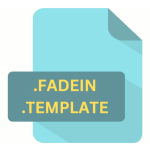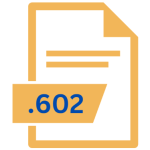.PAGES-TEF File Extension

Pages iCloud Document
| Developer | Apple |
| Popularity | |
| Category | Text Files |
| Format | .PAGES-TEF |
| Cross Platform | Update Soon |
What is an PAGES-TEF file?
.PAGES-TEF file extension is intimately tied to the Pages application, an integral part of Apple’s iWork suite. Unlike the standard .PAGES extension, .PAGES-TEF files are a specialized subset with a specific purpose.
These files primarily serve as templates for Pages documents, carrying predefined layouts, styles, and placeholders for content. Essentially, .PAGES-TEF files act as blueprints for creating consistent and visually appealing documents.
More Information.
Upon its introduction, Pages aimed to offer a compelling alternative to Microsoft Word, combining word processing capabilities with desktop publishing features. .PAGES-TEF files were created to facilitate this mission by providing users with a starting point for their documents.
These templates encompassed a range of styles and designs, from formal business documents to creative brochures and flyers.
The initial purpose of .PAGES-TEF files were to streamline document creation by offering predefined structures and designs.
Users could select a template that suited their needs, sparing them the effort of designing documents from scratch. This approach not only saved time but also ensured a consistent and professional look for documents.
Origin Of This File.
The story of the .PAGES-TEF file extension is closely linked to the development of the Pages application and Apple’s commitment to enhancing the user experience.
Apple introduced Pages as part of the iWork suite, initially unveiled in January 2005. The objective was clear: to provide Mac users with a powerful, yet user-friendly, word processing and page layout tool.
As part of this vision, .PAGES-TEF files were conceived to simplify the process of document creation. Templates have long been a staple in the world of desktop publishing, and Apple sought to bring this convenience to the digital realm.
File Structure Technical Specification.
.PAGES-TEF files are essentially ZIP archives that contain a set of components:
- Template Layout: This includes the predefined layout and structure of the document, such as margins, headers, footers, and page orientation.
- Styles and Formatting: .PAGES-TEF files store information about fonts, text styles, colors, and other formatting elements to maintain visual consistency.
- Placeholders: These placeholders indicate where specific content, such as text, images, and charts, should be inserted.
- Metadata: Information about the template, including its title, author, and version, is included to help users identify and manage templates effectively.
- Resources: If the template includes custom images, graphics, or other media elements, these resources are bundled within the .PAGES-TEF file.
.PAGES-TEF files are not designed for storing the actual content of documents but rather the framework within which content should be placed.
How to Convert the File?
Converting .PAGES-TEF files to more widely compatible formats can be necessary when sharing documents with users outside the Apple ecosystem. Here’s how to do it:
1. Using Pages on macOS:
- Open the .PAGES-TEF file with Pages.
- Go to ‘File’ > ‘Export To.’
- Choose a format such as PDF, Word, or another common format.
- Follow the prompts to save the converted file.
2. Using iCloud:
- Upload the .PAGES-TEF file to iCloud.
- Open it in the Pages web app.
- Click on ‘File’ > ‘Download a Copy.’
- Select the desired format for conversion.
- Download the converted file to your computer.
3. Online Conversion Tools:
- Visit an online file conversion service like Zamzar or CloudConvert.
- Upload the .PAGES-TEF file.
- Choose the format you want to convert to.
- Start the conversion process and download the converted file once it’s ready.
Advantages And Disadvantages.
Advantages:
- Streamlined Document Creation: .PAGES-TEF files simplify the document creation process by providing professionally designed templates.
- Consistency: They ensure a consistent look and feel for documents, which is especially valuable for businesses and organizations.
- Time Efficiency: Users save time by starting with preformatted templates rather than building documents from scratch.
Disadvantages:
- Limited to Apple Ecosystem: .PAGES-TEF files are primarily compatible with Pages on macOS and iOS, limiting their use to Apple users.
- Not for Content Storage: These files are not meant for storing actual content, which can be confusing if users inadvertently save content within the template.
- Limited Customization: While templates are convenient, they may not cater to highly specific design requirements, limiting customization.
How to Open PAGES-TEF?
Open In Windows
- Unfortunately, Pages is not natively available for Windows.
- To open .PAGES-TEF files, consider converting them to a more common format (e.g., PDF, Word) using one of the methods mentioned earlier.
- Alternatively, use third-party software that supports Pages documents, though formatting may not be preserved perfectly.
Open In Linux
- Pages is not supported on Linux.
- Convert the .PAGES-TEF file to a compatible format like PDF or Word using online tools.
- Use document viewers or open the converted files with compatible software like LibreOffice.
Open In MAC
- Simply double-click the .PAGES-TEF file.
- It will open automatically in the Pages application.
- If Pages is not installed, you can download it from the Mac App Store.
Open In Android
- Pages is not available for Android.
- Convert the .PAGES-TEF file to a compatible format for viewing and editing on Android devices using online converters.
- Open the converted file using compatible apps such as Microsoft Word for Android or PDF viewers.
Open In IOS
- Tap on the .PAGES-TEF file.
- It will open in the Pages app or prompt you to open it with Pages.
- You can download Pages from the App Store if needed.













